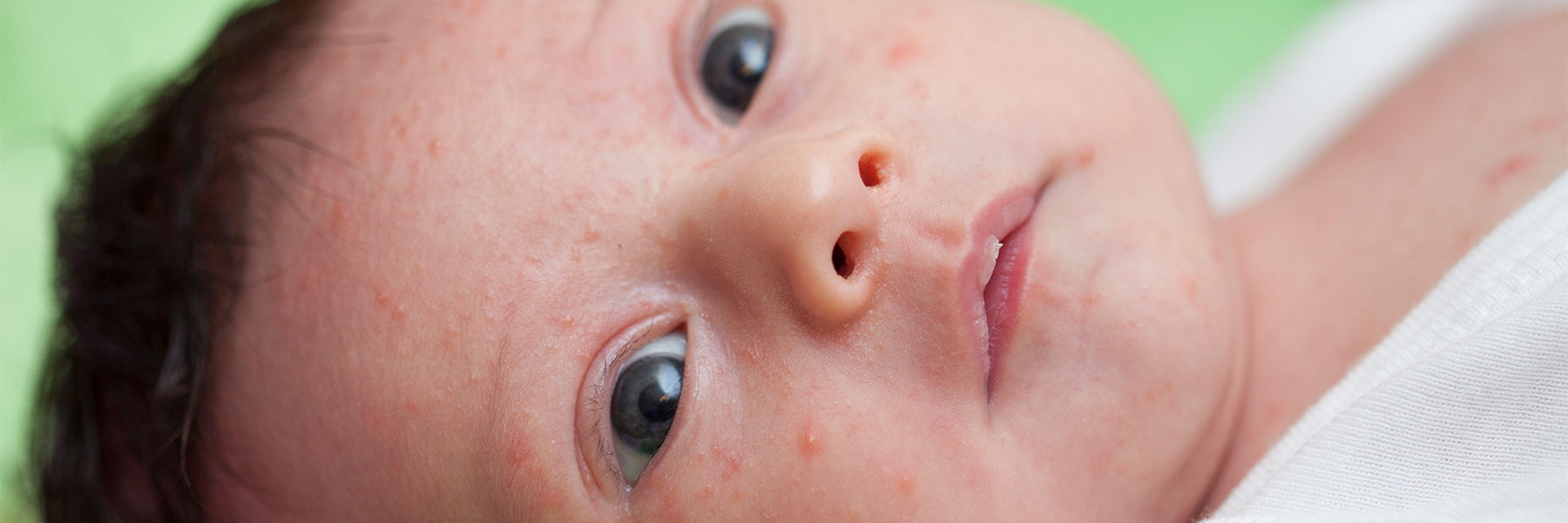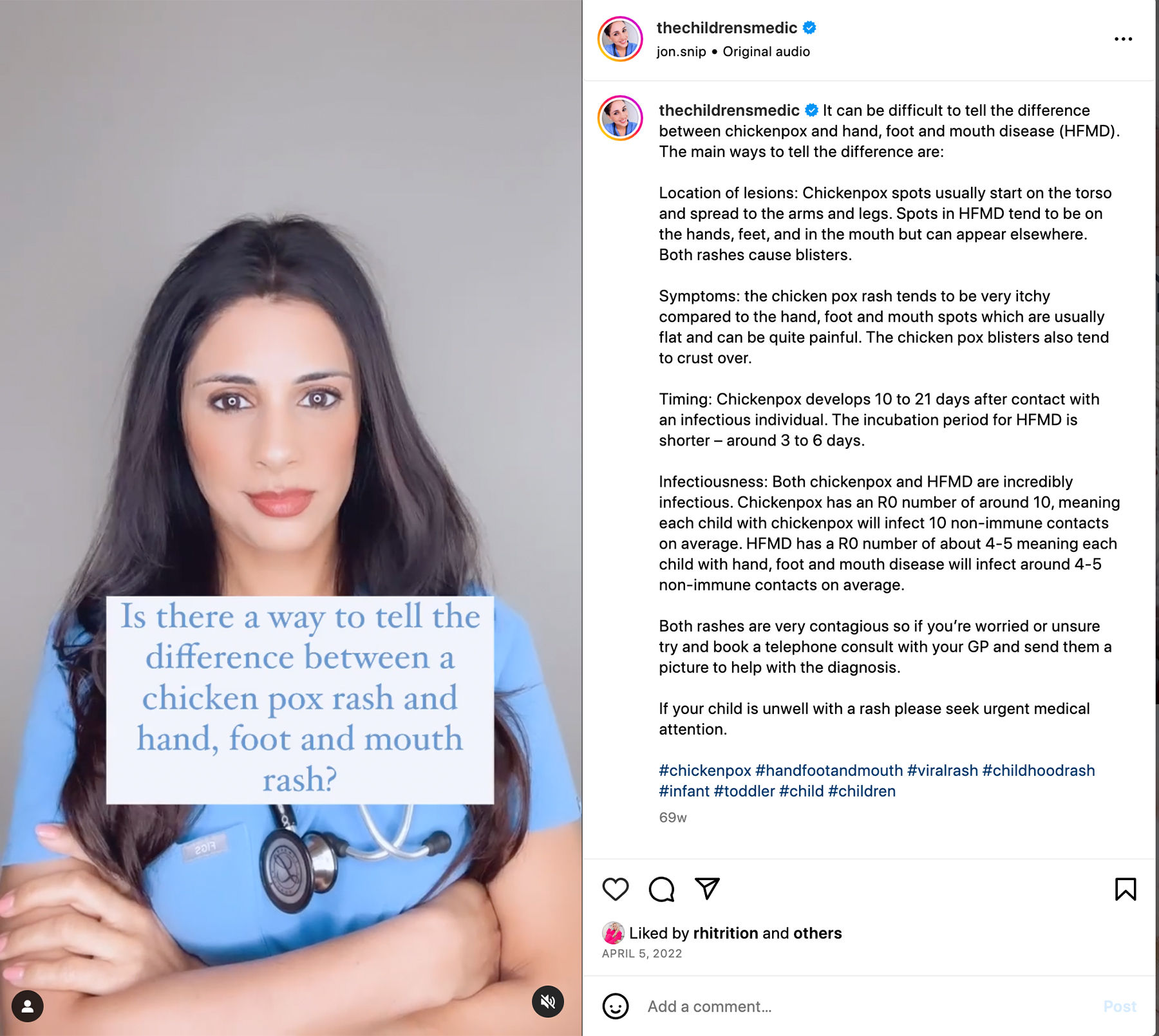Use arrow keys to navigate through the menu items. Use Tab key to navigate through the menu banners.
Newborn Spots & Rashes

Newborn Spots & Rashes
Baby acne and other breakouts are surprisingly common in young babies, but are they anything to worry about?
We tend to associate spots and acne with teenagers, but did you know newborns can get breakouts, too? Research shows that around 1 in every 5 babies will suffer from ‘baby acne’ in the first few weeks of life.
Although most facial breakouts are harmless, some rashes can signal that your baby is unwell, so always see your GP if you’re concerned.
Baby acne
Spots that mostly appear on a newborn’s face, without a fever or itching, are likely to be baby acne, also known as newborn or neonatal acne. “Newborn breakouts may be linked to exposure to maternal hormones,” says Dr Shruti Nathwani, aka @thechildrensmedic on Instagram. Baby acne may also be caused when hair follicles become blocked, leading to a build-up of oil.
“A baby acne ‘rash’ looks like red pimples and usually appears in the first month,” says Dr Nathwani. The pimples tend to come up on the cheeks, nose and/or forehead. “Baby acne shouldn't cause any discomfort to your baby, and it should clear up within weeks to months,” says Dr Nathwani.
“I was worried that my baby's acne meant she would have skin problems when she gets older, but my GP said that isn't the case at all. I felt really relieved to see the doctor about it and the spots went away after about 6 weeks,” says Gracie Musa, mum to Sade, 4 months.
Milia
These are small white or yellow under-the-skin spots, that tend to appear when babies are just a few days old. Milia are harmless, and very common. The bumps occur when the sweat glands get blocked, because they aren't yet fully developed. Milia usually go away within a few weeks and do not need treatment.
Erythema toxicum neonatorum
Sometimes confused with eczema, these raised red, yellow and white spots may appear within a few days of birth. They usually develop on the face but can also erupt on the body, upper arms and thighs. The rash can come and go but should get better in a few weeks without treatment.
"I was worried about the spots on my baby's face. My GP told me they were erythema toxicum neonatorum and gave me information about it. I was breastfeeding so used some cotton wool pads soaked with breastmilk occasionally just to help soothe it. It didn’t last long,” says Ashley Brennan, mum to Lucas, 3 months.
How should I treat my baby’s spots?
For baby acne, milia or erythema toxicum, no treatment is needed – just clean the area with warm water and pat it dry gently. Do not pick the spots or use adult acne products,” says Dr Nathwani. These tips may help:
-
Make sure bath water is lukewarm, not hot
-
Only use baby-formulated skincare products
-
Choose clean, soft towels and gently dab baby’s skin dry
-
Wash baby clothes and bedding with a gentle non-biological laundry detergent
Eczema
Dry, itchy patches on your little one's skin may be eczema. In babies with light skin, eczema patches are red, while in darker-skinned babies, the rash might look brown, grey or purple. Babies under 6 months tend to be most affected on their cheeks, chin, forehead and scalp.
“We didn’t know that young babies could get eczema, but Anil developed it at just 8 weeks old. We used soap substitutes and emollient creams from the doctor, and learned to avoid his triggers, so flare-ups happen less often now,” says Sanjay Kumar, dad to Adil, 9 months.
How should I treat my baby’s eczema?
Use gentle, fragrance-free, and hypoallergenic baby creams or ointments. Steer clear of fragranced soaps and scratchy fabrics. Lukewarm baths will cool your baby's skin and may relieve the itching. The doctor might suggest using mild topical corticosteroids or other medications to ease inflammation and itching.
Should I be concerned if my baby has spots?
Newborn baby spots are generally nothing to worry about. However, anything unusual, including rashes, should always be checked out by a doctor.
“If the rash is associated with a fever, lethargy, poor feeding, coughing or any other worrying symptoms, contact your GP as soon as possible,” says Dr Nathwani. Contagious rashes include chickenpox and hand, foot and mouth.

NHS advice on rashes adds that ‘as a parent, you may know if your child seems seriously unwell and should trust your judgement.’
It’s also important to see the doctor if you suspect eczema – as soon as possible if the rash is oozing or crusty, as it may be infected.
If a rash on your baby’s skin doesn’t fade when pressed with a glass, call 999 or go straight to A&E as this can be a sign of meningitis.
When will the rash clear up?
Be reassured that baby acne, milia and erythema toxicum neonatorum will most likely disappear without a trace, and for many children, eczema will clear as they grow older.
Help & Customer service
- Help Centre
- How to shop
- Product recalls
Payment Methodslist with 8 items
- Asda Group of Companies
- Modern Slavery Statement
- Electrical Waste Recycling
- Terms & Conditions
- Customer Review Policy
- Privacy Centre
- Cookie Settings
- Accessibility
© ASDA 2025